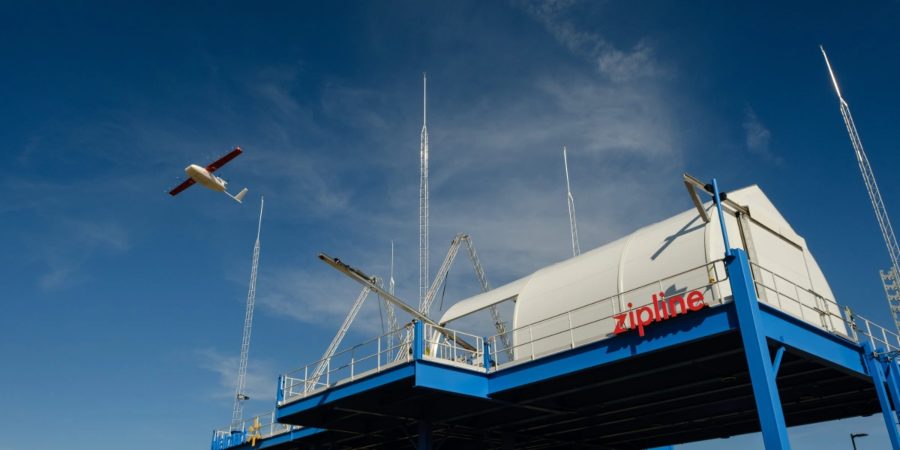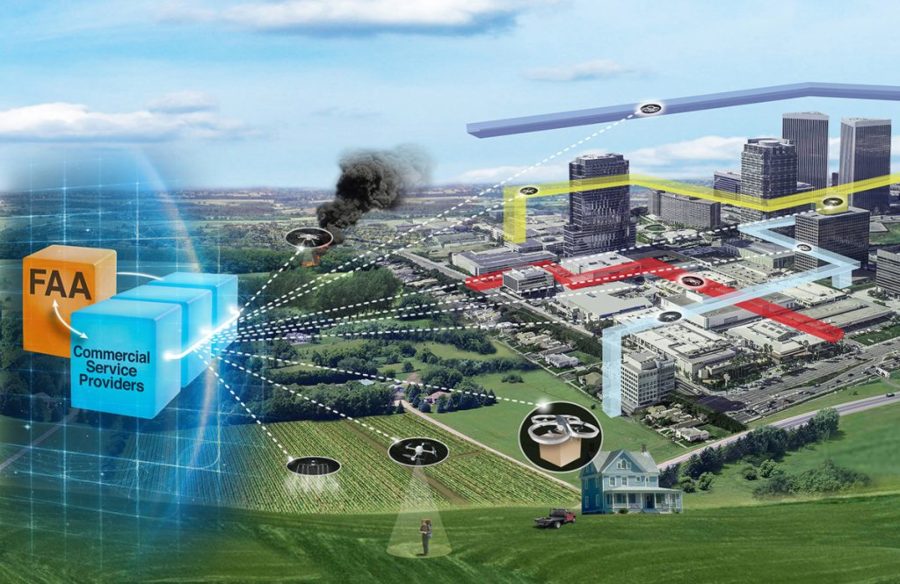NASA Partners with Zipline to Learn How to Manage Our Increasingly Busy Skies
BY Zacc Dukowitz
10 August 2022NASA recently signed a Space Act Agreement with medical drone delivery company Zipline. (For NASA, the term Space Act Agreement is just another way to say partnership.)

Credit: Zipline
NASA’s goal for the partnership is to work with Zipline to learn about the management of autonomous vehicles and “pursue a future vision of U.S. aviation that includes delivery drones and air taxis.”
A primary focus of the partnership is NASA’s interest in developing operational systems that allow a small number of people to manage a large number of autonomous vehicles at the same time.
NASA calls this capability m:N. The phrase is short for Multi-Vehicle Control, with m signifying the operators and N signifying the autonomous vehicles.
The term m:N first got attention in March of last year when NASA formed its m:N working group. The group includes BNSF Railway, a longstanding FAA partner in testing BVLOS and other operations, and Zipline, among others.
Why m:N Is So Important—and Why Zipline Knows So Much about It
For many types of commercial drone operations to scale it will be essential for a single operator to be able to control multiple drones at once—or what NASA is calling m:N.
Drone delivery is an obvious example of a type of drone operation that will benefit from this capability. The use of drone-in-a-box solutions to do ongoing autonomous monitoring, as well as inspections and perimeter surveillance, are also emerging examples.
This work addresses the workforce constraint problem and business case for many applications of interest to both NASA and industry, including package delivery with drones, air taxi passenger transport, and emergency response operations.
– Kelley Hashemi, Technical Lead for Autonomous Systems at NASA’s Ames Research Center in California
As drone autonomy improves, the need to have one operator for each drone will diminish, and the need to understand how a single operator can be responsible for multiple drones will continue to grow—as will the use cases for this capability.

Credit: Zipline
So why did NASA choose Zipline to improve its understanding of m:N?
Because Zipline leads the pack when it comes to companies that are already doing operations with multiple drones deployed at once overseen by only a handful of people.
With large scale operations in Ghana and Rwanda and a growing presence in Japan and the U.S., Zipline is considered the largest drone delivery company in the world.
The company has flown over 25 million miles in total—probably more than all the other drone delivery companies out there combined—in operations that are autonomous, with a few pilots overseeing large fleets. Given this, it’s no wonder NASA wants to partner with Zipline to see what it’s learned.
Through this partnership, NASA will use Zipline’s experience to find solutions for broadly implementing m:N operations in the U.S. airspace. In return, Zipline can leverage NASA’s tools and research to determine what is needed to expand its fleet operations in the United States.
–NASA’s Zipline partnership announcement
Zipline recently received its Part 135, which will allow it to rapidly scale its drone delivery operations in the U.S. The new air carrier certificate combined with the learning it will gain from NASA’s tools and research could help it grow aggressively in the coming years.
NASA’s Ongoing UTM Work
NASA has been doing work to incorporate drones into the national airspace for years.
This work falls under the general umbrella term UTM, for Uncrewed Traffic Management. Its end goal is creating the architecture of a UTM system that can oversee both manned and unmanned aircraft operations in the U.S.
From 2016 to 2019 NASA went through a massive series of UTM tests, completing four distinct Technical Capability Levels.
After completing these, NASA handed UTM testing to the FAA, which went on to do two phases of testing. These efforts culminated in a massive test that involved over 100 partners focused on managing unmanned traffic in complex urban environments.

Credit: NASA
Now, NASA has a large effort underway entitled the Revolutionary Aviation Mobility Sub-Project. The project has multiple aims, including learning more about m:N as well as incorporating UAM (taxi drones and large cargo drones, among other large aerial vehicles) into the national airspace.
Regarding the latter, NASA has partnerships in place with drone taxi companies Joby Aviation and Wisk, and it’s sure to bring on more partners as it continues its work.


